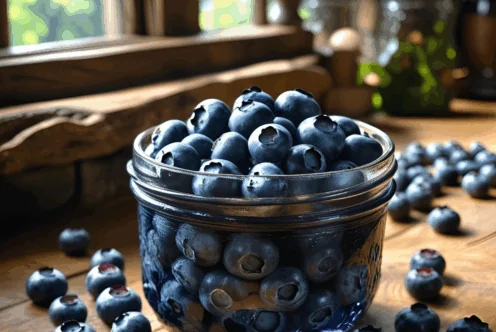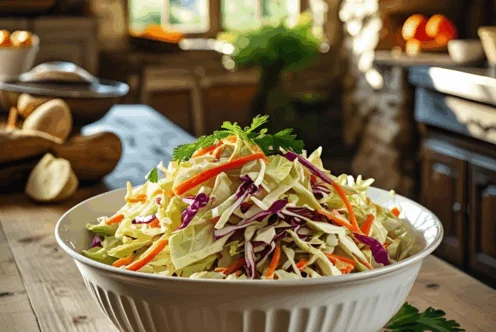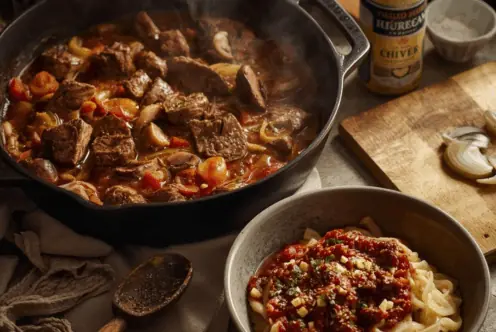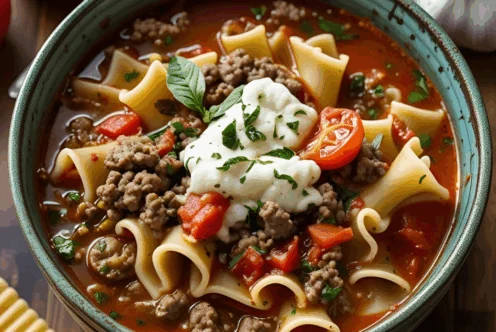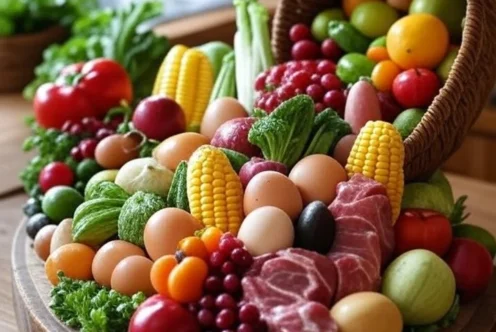Blog
What Makes Peppers Spicy?
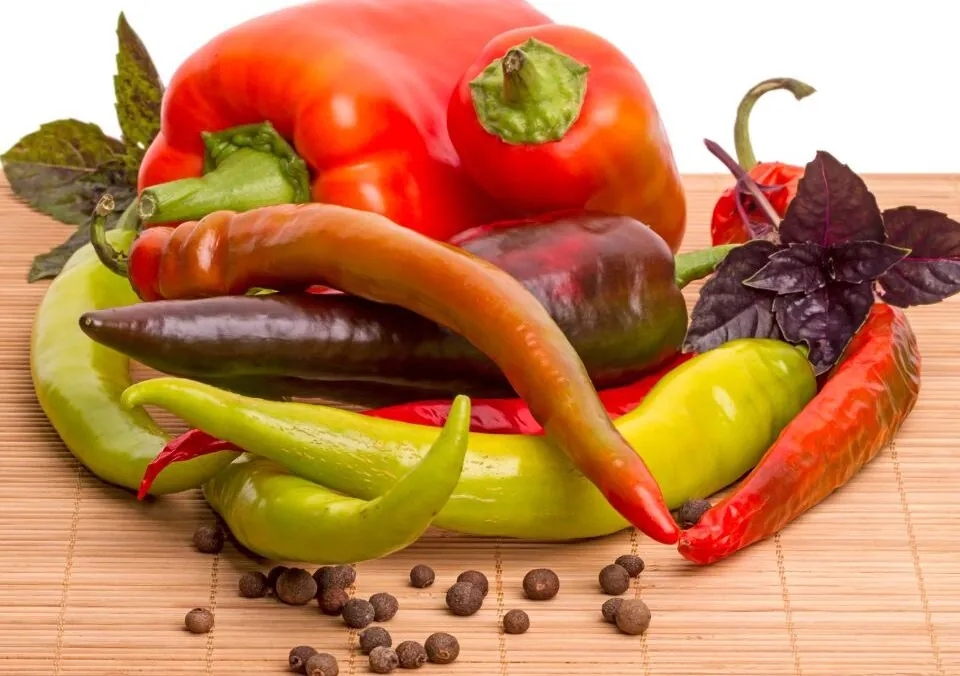
When I was younger, I loved spicy foods. Anything and everything I ate had hot sauce added—except for sweet things, of course! Have you ever wondered what makes peppers spicy? And why some of them are milder while others are spicier? The answer lies in the genetic makeup of the pepper and primarily in a compound known as capsaicin.
The Science of Capsaicin
Capsaicin is the main bioactive plant compound in peppers, and it’s best known for being responsible for their heat. When you bite into a spicy pepper, capsaicin interacts with the receptors in your mouth, particularly the TRPV1 receptors, which are normally responsible for sensing heat and physical abrasion. This triggers a sensation of burning, which is why your mouth feels hot after eating a spicy pepper.
Moreover, each variety of pepper has its own unique amount of capsaicin, resulting in different levels of spiciness. The Scoville scale is a scientific measurement that quantifies the heat of peppers based on their capsaicin content. Bell peppers sit at the bottom of the scale with a rating of zero SHU (Scoville Heat Units) since they contain no capsaicin. On the other end of the spectrum, the Carolina Reaper is currently recognized as the spiciest pepper in the world, boasting an average rating of over 1.5 million SHU, with some individual peppers exceeding 2.2 million SHU!
Capsaicin and Health Benefits
Capsaicin is not merely a source of spice; it also offers several health benefits:
1. Reduces Pain
Research has shown that capsaicin can bind with pain receptors or the nerve endings that sense pain, causing them to become desensitized over time. This mechanism is a primary reason why many people can gradually tolerate spicier foods without experiencing the severe burning sensation they once felt. In fact, capsaicin is often used in topical pain relief products, such as creams and ointments, to alleviate conditions like arthritis or neuropathy. Studies published in journals like the Journal of Pain Research have highlighted its effectiveness in reducing pain when used regularly.
2. Promotes Weight Loss
Another interesting aspect of capsaicin is its potential role in weight management. When consumed before meals, it has been found to reduce appetite and caloric intake, which can lead to weight loss. According to research published here, capsaicin can increase feelings of fullness and satisfaction after meals. Furthermore, it has been shown to boost your body’s fat-burning capabilities, which can contribute to weight loss over time.
3. Cardiovascular Health
Emerging research indicates that capsaicin may also have cardiovascular benefits. Studies, such as those published in the American Journal of Clinical Nutrition, suggest that capsaicin can help improve circulation and lower blood cholesterol levels. By enhancing blood flow and reducing plaque buildup in the arteries, it may help prevent heart disease.
4. Antioxidant Properties
Peppers are rich in a variety of antioxidants, including vitamin C and flavonoids, which can combat oxidative stress in the body. Antioxidants help neutralize free radicals, thus preventing cellular damage that can lead to chronic diseases. A diet rich in antioxidants is linked to a reduced risk of several health issues, including cancer and heart disease.
Understanding the Scoville Scale
The Scoville scale is a fascinating aspect of chili pepper analysis. It was developed in 1912 by Wilbur Scoville, an American pharmacist, to provide a metric for the pungency of various peppers. The original method involved diluting a pepper extract in sugary water until the heat was no longer detectable to a panel of tasters; the number of dilution levels indicated the pepper’s Scoville rating.
For a more scientific analysis, modern techniques involve high-performance liquid chromatography (HPLC) to measure the exact capsaicin concentration in pepper extracts. This method provides accurate numerical data, giving a clearer picture of a pepper’s heat level.
Exploring Different Types of Peppers
Not all peppers are created equal, and understanding the various types can enhance both your culinary experience and nutritional intake.
Bell Peppers
As mentioned earlier, bell peppers are the mildest peppers on the Scoville scale, with a rating of 0 SHU. They are rich in vitamins A and C, and they add a sweet crunch to salads, wraps, and stir-fries. Bell peppers are available in several colors, including green, red, yellow, and orange, each with its unique flavor profile.
Jalapeño Peppers
Jalapeños are one of the most popular spicy peppers, averaging between 2,500 to 8,000 SHU on the Scoville scale. These peppers are versatile and can be used in salsas, stuffed with cheese, or grilled. They add a moderate level of heat and are often used in Mexican cuisine.
Serrano Peppers
Serrano peppers are slightly hotter than jalapeños, ranging from 2,500 to 5,000 SHU. They are often used in fresh salsas and sauces, offering a crisp texture and bright flavor.
Habanero Peppers
Habaneros pack a punch, measuring between 100,000 to 350,000 SHU. They bring a fruity, tropical flavor along with intense heat, making them ideal for hot sauces and marinades. If you’re daring enough to try them fresh, be ready for the burn!
Ghost Peppers
Ghost peppers, or Bhut Jolokia, are famous for their extreme heat level, reaching over 1,000,000 SHU. They gained notoriety as one of the hottest peppers in the world, often used in extreme cooking challenges. Caution is advised when handling or consuming ghost peppers.
Carolina Reaper
Currently recognized as the world’s hottest pepper, the Carolina Reaper has an average rating exceeding 1.5 million SHU, with some peppers being rated over 2 million SHU. Its sweet, fruity flavor complements its intense heat, making it a favorite for hot sauce enthusiasts.
Culinary Uses of Peppers
Incorporating peppers into your meals not only enhances flavor but also boosts nutritional value. Here are some creative ways to use peppers in your cooking:
Salsas and Sauces
Fresh salsa made from tomatoes, onions, cilantro, and peppers can elevate any dish. Experiment with different pepper varieties to create your ideal balance of heat and flavor. For example, jalapeños add a mild kick, while habaneros introduce more heat.
Stuffed Peppers
Stuffed peppers are a classic dish where you can use bell peppers or poblano peppers. Fill them with a mixture of grains, vegetables, and proteins and bake until tender.
Soups and Stews
Adding peppers to soups and stews can deepen the flavor profile and add a spicy kick. Peppers can be roasted or sautéed before being added for additional richness.
Marinades
Creating a spicy marinade with peppers, garlic, and spices can enhance meat or vegetable flavors. Use jalapeños or habaneros for a flavorful kick.
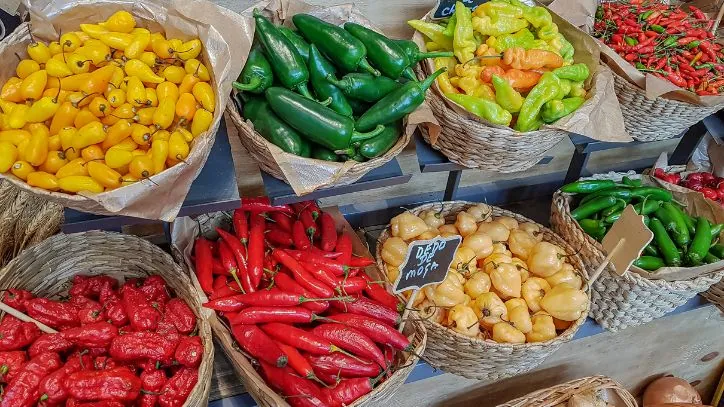
Growing Your Own Peppers
If you’re inspired to incorporate more peppers into your diet, consider growing your own! Many varieties are accessible to home gardeners, and growing peppers can be a rewarding experience.
Tips for Growing Peppers
- Choose the Right Variety: Depending on your heat preference and local climate, select pepper seeds that will thrive in your area.
- Start Indoors: If you live in a cooler climate, start seeds indoors six to eight weeks before the last frost date.
- Provide Heat: Peppers thrive in warmer temperatures. They prefer daytime temperatures of 70-85°F and nighttime temperatures above 60°F.
- Water Consistently: Water your plants regularly but avoid overwatering; soil should be moist but not soggy.
- Fertilize: Use a balanced fertilizer to promote healthy growth, especially when the peppers begin to set fruit.
You can also visit local farmer’s markets or grocery stores for fresh, locally-grown peppers, which often provide a great selection of varieties.
Conclusion
Peppers offer a dynamic range of flavors, heat levels, and health benefits that can enhance any dish. Whether you enjoy a mild bell pepper or seek the thrill of biting into a Carolina Reaper, there’s a variety for everyone. With their health-promoting properties—from pain relief to weight loss—adding peppers to your diet is a delicious and beneficial choice.
Whether you buy them at the local market or grow them in your home garden, peppers can elevate your culinary creations. For more articles and recipes, check out the Fill Your Plate blog and explore the many exciting ways to enjoy this versatile fruit!
By Heide Kennedy, Arizona Farm Bureau Communications Intern














